US Navy: Big or Small, Boats are Indispensable to the USN
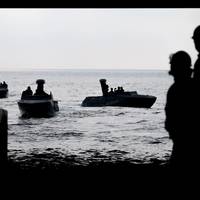
For the U.S. Navy, boats perform missions from mundane maintenance chores such as hull scraping and cleaning overboard discharges to clandestine special forces insertion and extraction. Some boats are about as basic as you can imagine, and some are equipped with sophisticated combat systems and weapons. Big or small, they all perform indispensable tasks for the Navy, Marine Corps and Coast Guard.Boats that are carried on and launched from ships are referred to as “shipboard boats,” to distinguish them from boats based at installations ashore.
How the Ukrainians – With No Navy – Defeated Russia’s Black Sea Fleet
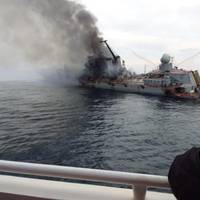
Since the Russian invasion began in 2022, Ukraine has successfully resisted its opponents on many fronts, but its most surprising success came in a theater where few expected Ukraine to prevail: the Black Sea.In 2022, the consensus among military analysts was that Russian leader Vladimir Putin’s military would most likely crush Ukrainian forces in the air, on land and at sea. With a vast infusion of financial assistance and weapons from the U.S. and Western nations, Ukraine has, however, fought Russia to a standstill on land.
US Navy Announces First Mine Countermeasures Mission Package Embarked on USS Canberra
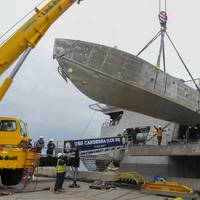
The U.S. Navy embarked the first Mine Countermeasures Mission Package (MCM MP) aboard USS Canberra (LCS 30), April 18, service officials announced. With the MCM mission package now onboard LCS 30, the Navy anticipates the first MCM Mission Package deployment in Fiscal Year 2025.As part of the embark process, the Navy installed sensors, unmanned vehicles, support containers and the software that enables Sailors to execute MCM operations from an Independence-variant Littoral Combat Ship.
Titanic Sub Pieces Found on Ocean Floor; No Survivors
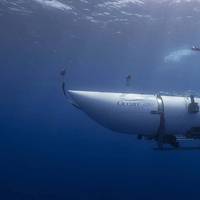
The five people aboard a missing submersible are thought to be dead, according to the company that owns the vessel, bringing a grim end on Thursday to the massive search for the vessel that was lost during a voyage to the Titanic."These men were true explorers who shared a distinct spirit of adventure, and a deep passion for exploring and protecting the world’s oceans," OceanGate Expeditions said in a statement. "Our hearts are with these five souls and every member of their families…
As the Clock Ticks on the Titan Sub, an Expert Explains What Safety Features a Submersible Should Have
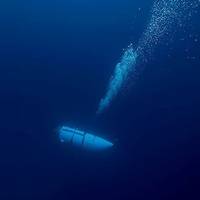
The oxygen supply of the missing Titan submersible is expected to run out today around 10am GMT, or 8pm AEST.A frantic search continues for the Titan and its five occupants, with sonar buoys having recorded “banging” noises in the search area on Tuesday and Wednesday.With the vessel’s fate yet to be determined, the general public is asking questions about the safety of such touristic endeavours.The contextThe context in which the Titan has disappeared is disturbing. Reports have come out detailing court documents from a 2018 case that show OceanGate…
Russian ‘Spy Ship’ in the North Sea Raises Concerns About Maritime Infrastructure Security
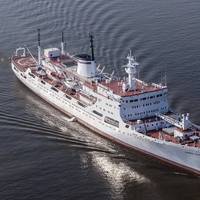
A new documentary produced by a consortium of public broadcasters in Sweden, Denmark, Finland and Norway has revealed what appears to be a profound threat to maritime and undersea energy and data infrastructure in the North Sea and the Baltic region. The Shadow War includes footage of a Russian research vessel called Admiral Vladimirsky allegedly collecting data on windfarms, gas pipelines, power and internet cables.The film, which has been widely reported in the UK press this week, asserts that Russia is systematically mapping the vulnerabilities of maritime infrastructure in the North Sea.
Uncrewed Boats Are Changing the Way Wars Are Fought at Sea

When Ukraine successfully deployed self-driving “drone” boats for a major attack on the Russian navy at Sevastopol in Crimea in September 2022 it was a defining moment that changed the future of naval warfare. Uncrewed surface vessels (USVs) have been used before, but this was the first instance of multiple, armed USVs, used simultaneously in combination with aerial drones for a successful, offensive naval operation on a military target.Several Russian ships were damaged in the attack…
Are Unmanned Surface Vessels the Key to a 500-Ship U.S. Navy?
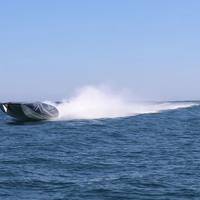
In an era of great power competition, navies – by virtue of their ability to span the globe and effectively deliver combat power – are likely to be the sine qua non of military power. This leads, naturally, to the tendency to count numbers of ship hulls when comparing the strength of navies. Lost on no one is the fact that the size of China’s Navy now exceeds that of the U.S. Navy, and the gap in ship numbers is growing.During the Cold War, while the quality of their ships might not have been equal to that of the U.S.
Navy: Swedish Combat Boat 90, Both a Warrior and a Workhorse
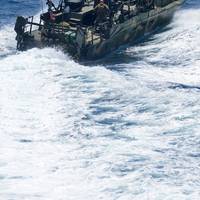
The Swedish-built Combat Boat 90 (CB 90) has established itself with military forces around the world as both a warrior and a workhorse. The 52-foot boats first entered service in 1991 as troop carriers with the Swedish Marines, which is still procuring them. There are more than 250 operating worldwide today.These rugged boats are optimized for high-speed / shallow-draft operations in and around Sweden’s many coastal islands, but they have also proven to be ideal for a variety of other applications and operating environments.The CB 90 is 52 feet long, with a draft of just 2 feet 7 inches.
Nord Stream Probe Finds Evidence of Detonations, Swedish Police Say
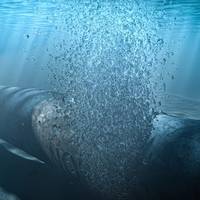
A crime scene investigation of the Nord Stream 1 and 2 gas pipelines from Russia to Europe found evidence of detonations, strengthening suspicions of "gross sabotage", Sweden's Security Service said on Thursday. Swedish and Danish authorities have been investigating four leaks after the pipelines, which link Russia and Germany via the Baltic Sea and have become a flashpoint in the Ukraine crisis, were damaged at the start of last week. Europe, which used to rely on Russia for about 40% of its gas…
US Navy: Building Small Combatants to Create Force Structure and Capability
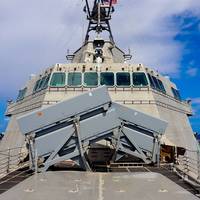
The U.S. Navy needs more ships. And that means the Navy has to build more ships than it is decommissioning.The sea service has a stated a goal of 355 ships, and as many as 500 and more when unmanned platforms are counted. There are 298 ships in the fleet today. For surface ships, this number includes a high-low mix of highly capable large surface combatants, and smaller ships such as littoral combat ships LCS).The Navy’s smallest combatants are the 330-ton, 197-foot coastal patrol boats (PCs). Up until recently, ten of them have been serving in the Middle East with the U.S.
Marine Autonomy: The Future is Being Revealed

Automation, where routine tasks are handled by machines, has been talked about throughout maritime sectors for much of the 21st Century. Initially touted by suppliers of engine room and bridge management systems for its cost savings (with reduced manning levels), its value proposition was then infused with risk management (reduced human error) and remote operations, where vessels could be managed from a shoreside control room. In early 2017, Rolls Royce —an early proponent of unmanned operations—teamed with tug operator Svitzer on a remotely operated vessel…
Thruster Tech: Capturing Performance Data for Design of Unmanned Vehicles
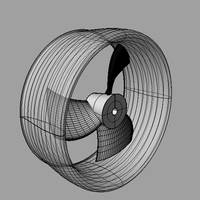
Conducting a sea trial is a necessary step upon delivery of a ship. This activity not only documents and validates anticipated ship speed and power, but if done correctly also provides performance data that can be useful for design purposes. The same holds true for underwater vehicles in general and thrusters in particular. However, while gathering data may seem easy, extracting useful trial data for typical UVs can often be pretty challenging.We should start with an understanding of the system – the Vehicle-Propulsor-Drive system.
Subsea Defense: Navy Deepens Commitment to Underwater Vehicles
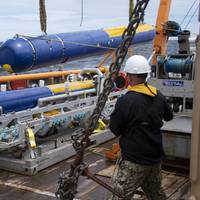
The U.S. Navy uses unmanned and robotic underwater vehicles for a multitude of functions, including environmental sensing, mine hunting, and salvage. The Navy plans to evolve an unmanned systems operating concept that is platform agnostic and capable of operating in highly complex contested environments with minimal operator interaction.The most recent edition of the Navy’s Unmanned Systems (UxS) Roadmap was issued in 2018, and a new version is expected in the near future. The 2018 document states that UxS will operate in every domain…
HII Acquires Autonomy Business from Spatial Integrated Systems
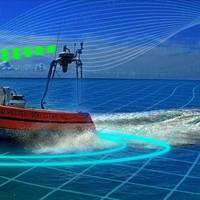
In a move that further expands its unmanned systems capabilities, Huntington Ingalls Industries acquired the autonomy business of Spatial Integrated Systems Inc. (SIS) which has proven unmanned surface vessel (USV) solutions.SIS’s unmanned systems solutions — including multi-vehicle collaborative autonomy, sensor fusion and perception — have been fielded for more than 6,000 hours on 23 vessel types. They have supported multiple development projects and demonstrations advancing autonomy in unmanned systems in the maritime…
New Autonomous Navigation System Put to the Test
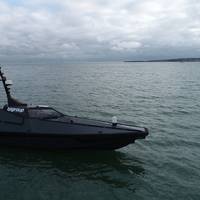
A rigorous sea trials program has demonstrated that a new autonomous navigation system can safely navigate unmanned vessels in real-time and in a real-life environment—without human intervention.U.K.-based tpgroup said its patent pending Northstar was successfully used on different platforms and within a range of environments that include congested waterways and in open water. This level of technological maturity (technical readiness level 7) means that it can be developed for…
Charting Terradepth's Big Ambitions in the Unmanned Vehicle Space
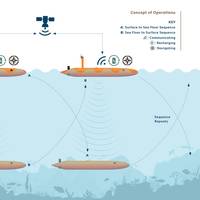
Ocean mapping at scale is the target of a new unmanned systems player started by two ex-US Navy SEALS. They have big ambitions, from new building unmanned vehicles to creating the intelligence that will drive them to changing how accessible ocean data is. Elaine Maslin learned more. The pace of change in the ocean mapping space has been fast in recent years. New entrants have come into the scene offering “force multiplier” mapping using autonomous underwater vehicles (AUVs) and unmanned surface vessels (USVs).
Video: LCS 21 Completes Acceptance Trials
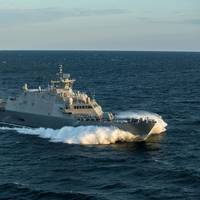
Littoral Combat Ship (LCS) 21, the future USS Minneapolis-Saint Paul, completed acceptance trials in Lake Michigan ahead of final outfitting and fine-tuning before delivery to the U.S. Navy in 2021.LCS 21 is the 11th Freedom-variant LCS designed and built by the Lockheed Martin-led industry team that includes Fincantieri Marinette Marine and Gibbs & Cox."LCS 21 joins a fleet of sister ships delivering unique flexibility and capability to the U.S. Navy," said Joe DePietro, Lockheed Martin vice president and general manager, Small Combatants and Ship Systems.
MBARI Works at Unlocking Ocean Biology
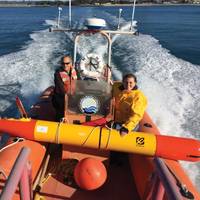
Greater understanding of what goes on in the ocean is starting to become a reality – thanks to growing use of unmanned surface and underwater vehicles and developments in biological sensing. Elaine Maslin takes a look at what a team at MBARI has been doing.Gathering biological data from the oceans remains a significant challenge for oceanographers. Now, an increasing range of unmanned vehicles that are able to work together is becoming available, as is an ability to collect biological data using them.It sounds straight forward…
USS Cooperstown Launched and Christened
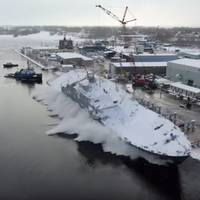
The U.S. Navy launched its newest Freedom-variant littoral combat ship (LCS), the future USS Cooperstown (LCS 23), on January 19 and then christened the new warship during a ceremony on February 29, in Marinette, Wis."The christening of the future USS Cooperstown marks an important step toward this great ship's entry into the fleet," said Acting Secretary of the Navy Thomas Modly. “The dedication and skilled work of everyone involved in the building of this ship has ensured that…
AV in Support of Naval Operations
Europe’s leading Naval defence company Naval Group has developed a range of sophisticated solutions to operate unmanned vehicles and protect warships systems to enhance the defence of sovereign interests.The French shipbuilding company has presented its solution to address compelling information modern warfare trends at the Unmanned Systems Exhibition (UMEX) in Abu Dhabi.Set in the context of emerging threats including the use of mines, piracy and cyber-attacks, Naval Group has developed a range of sophisticated solutions to operate unmanned vehicles and protect warships systems to enhance the defence of sovereign interests.Unmanned systems also offer many advantages…
Measuring the Hostile Ocean Beneath Hurricanes

Unmanned Vehicles Collect Data for Improving Storm ForecastsThe influences of ocean conditions and currents on living environments are now more widely appreciated—from the Earth’s climate and severe weather conditions to fisheries and biodiversity. Sustained and widespread measurements are needed to provide essential clues for understanding the oceans, for effective monitoring of environmental changes, and for helping to clarify the long-term effects of global warming.To meet this challenge, ocean researchers have invented various types of unmanned observing platforms.
Interview: Dr. Catherine Warner, Director, NATO CMRE

At CMRE, it’s not just about the science. It’s about building trust and confidence in resilient systems. An interview with Dr. Catherine Warner, Director, NATO Center for Maritime Research and Experimentation, La Spezia, ItalyTell us a little about yourself and CMRE. What does CMRE do, and how do you see your mission evolving?I came here from the Pentagon, where I was the science advisor for the director of operational test and evaluation. My experience has been working with operators on systems that they’re getting ready to field.











